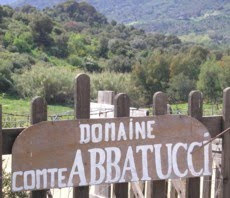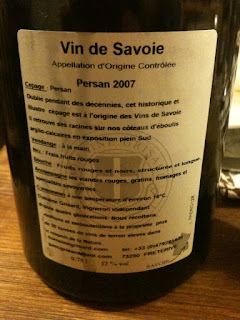
We had a Sciacarello lurking in our cellar, provenance forgotten (Artisan and Vine, Clapham?). Cuvee Faustine (Comte Abbatucci - bio-dynamique) Ajaccio, Corsica (12.5%). We had not exactly been bowled over by Corsican wines previously: Nieluccio turns out to be nothing more than Sangiovese and examples from the Patrimonio appelation were distinctly underwhelming.
So great was our joy to discover Sciacarello, the only autochthonous Corsican grape is a winner and joins our ever-expending list of hits. savoury - delicious: try it yourselves.

That word, by the way - autochthonous - is much-loved by Italians, French, Spanish et al, but never used by English speakers. Can we make a small request of our autochthonous friends and ask if they could use the word 'indigenous' as an equivalent at least sometimes? If they do, we could promise not to use Factory as the translation of Fattoria...
Anyway, here's an updated list of Slotovino hits:
Whites:
Antao Vaz
Doradilla
Encruzado
Goldriesling
Loin de l'Oieul
Loueiro
Pecorino
Torbato
Trajadura/Treixadura
Vilana
Reds:
Ancelotta
Argaman
Cornalin
Folle noire
Francisi
Grolleau
Gropello
Maglioppo
Nerello Capuccio
Osoleta
Persan
Piedirosso
Pineau d'Aunis
Poulsard
Pugnitello
Ramisco
Romé
Sciacarello
Vernaccia nera
Vranec




